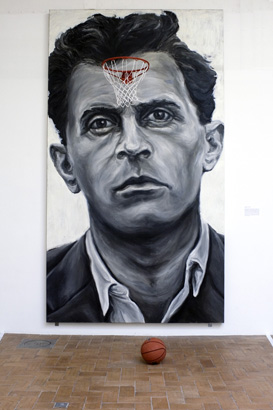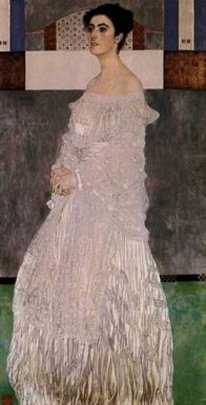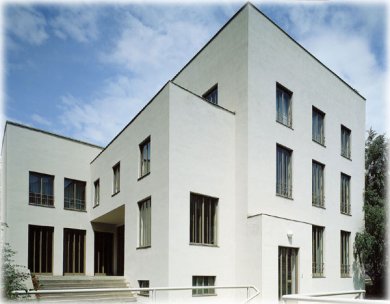The House of Wittgenstein
 Gretl
Gretl 
(Fabienne Leclerc – Via)
Mindgames of L.Wittgwnstein by Fabienne Leclerc and Margaret “Gertle” Wittgenstein painted by Gustav Klimt
Margaret “Gertle” Wittgenstein and her younger brother Ludwig Wittgenstein did not get along according to Alexander Waugh who wrote “The House of Wittgenstein” which has been receiving great attention in the literary world.
Waugh claims that Gretl was the warmest, kindest and most humorous Wittgenstein, but also the bossiest, most ambitious and worldly. The most normal was Helene, who married a civil servant. But it is the brothers who really fascinate Waugh. Three committed suicide (Via)
Ludwig distributed 100,000 kronen among various Austrian “artists”. These included the architecht Adolf Loos, the painter Oskar Kokoschka and the poets Rainer Maria Rilke and Georg Trakl. (page 61 – The House of Wittgenstein)
Here is a review from New Yorker, The nervous splendor – The Wittgenstein family had a genius for misery by Anthony Gottlieb.
Alexander Waugh is the grandson of Evelyn Waugh.
Alexander Waugh, the author of “The House of Wittgenstein: A Family at War” (Doubleday; $28.95), is no stranger to family sagas. He belongs to the fourth generation of an English literary dynasty that includes the novelist Evelyn Waugh, who was his grandfather; his previous book, “Fathers and Sons,” is a memoir of the Waughs.
Waugh’s emphasis is on Paul the one hand concert pianist in this book.
Here is Marjorie Perloff (Bookforum), her review -Sniveling Rivalry -Alexander Waugh psychologizes the troubled Wittgenstein clan
Indeed, The House of Wittgenstein might have been a much more interesting book had it focused on the differences, rather than the similarities, between Ludwig and the other Wittgensteins. How was it, after all, that out of eight siblings—siblings brought up so similarly in such particular circumstances— a single one emerged as so unlike the rest?
House  designed by Ludwig Wittgenstein.
designed by Ludwig Wittgenstein.
(Stonborough House was designed and built by Wittgenstein between 1926-8)
In the late 1920s, the philosopher Ludwig Wittgenstein designed and built a house in Vienna for his sister. Wittgenstein’s family was extremely wealthy (there were gold-plated faucets in the bathrooms at home), and the building proceeded without the usual financial constraint. In one famous instance, to better satisfy his sense of proportion Wittgenstein had the drawing room ceiling torn out and rebuilt three centimeters higher.
As a novice architect, Wittgenstein obviously had large ambitions. “I am not interested in erecting a building,” he once wrote, “but in … presenting to myself the foundations of all possible buildings.” Whether or not his sister’s house approached this high ideal, Wittgenstein himself judged the finished building to be austere and sterile. It has “good manners,” he later wrote, but no “primordial life,” no “health.” (Via)
The impact of The Gospel in Brief upon Wittgenstein’s philosophy (especially the later passages of the Tractatus Logico-Philosophicus), and his general view of ethics.
Previous post on Wittgenstein + Bruce Naumann
And Lastly visit an interactive net art
88 Constellations for Wittgenstein:(to be played by the left hand)